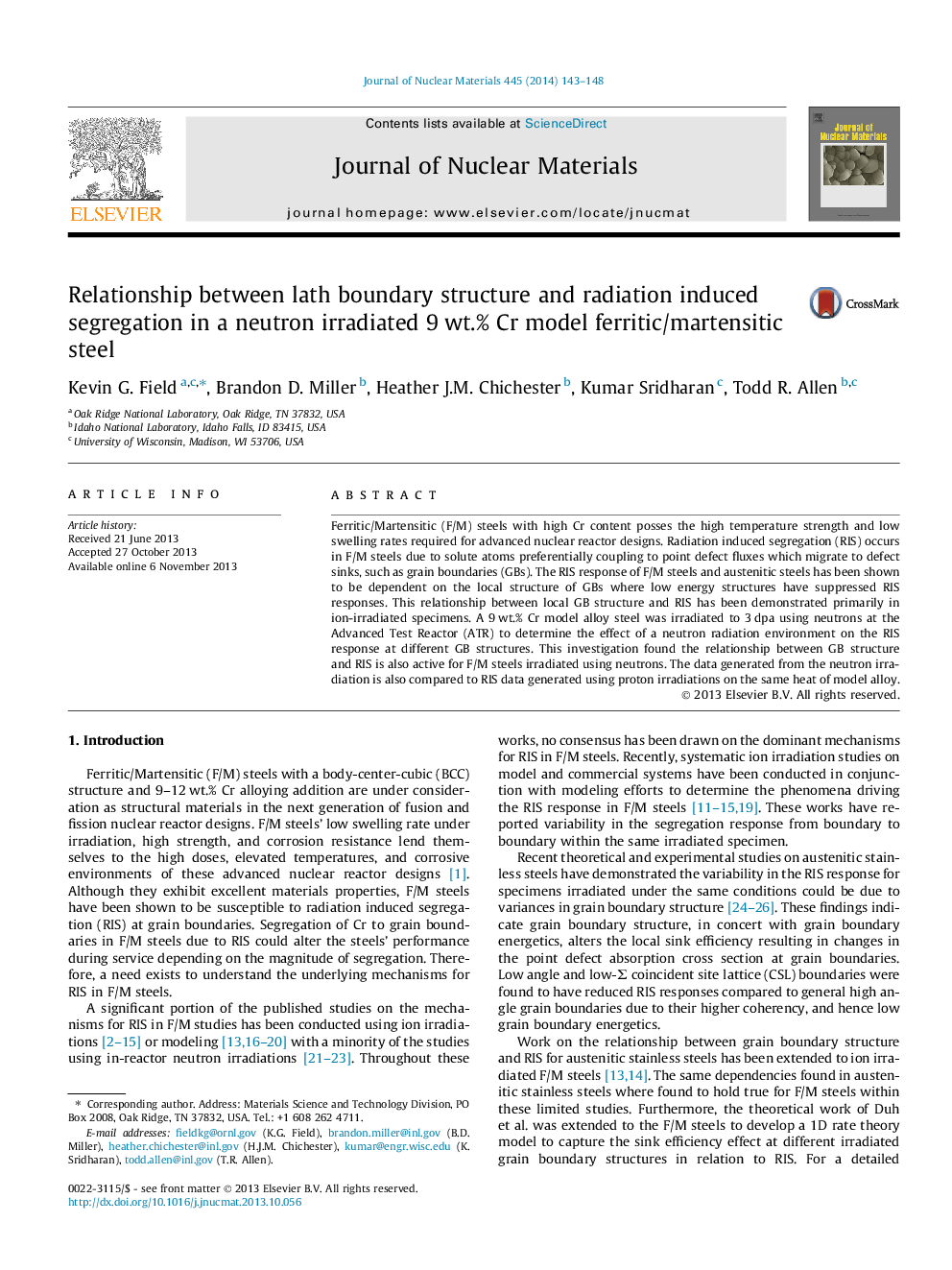| Article ID | Journal | Published Year | Pages | File Type |
|---|---|---|---|---|
| 7968288 | Journal of Nuclear Materials | 2014 | 6 Pages |
Abstract
Ferritic/Martensitic (F/M) steels with high Cr content posses the high temperature strength and low swelling rates required for advanced nuclear reactor designs. Radiation induced segregation (RIS) occurs in F/M steels due to solute atoms preferentially coupling to point defect fluxes which migrate to defect sinks, such as grain boundaries (GBs). The RIS response of F/M steels and austenitic steels has been shown to be dependent on the local structure of GBs where low energy structures have suppressed RIS responses. This relationship between local GB structure and RIS has been demonstrated primarily in ion-irradiated specimens. A 9Â wt.% Cr model alloy steel was irradiated to 3Â dpa using neutrons at the Advanced Test Reactor (ATR) to determine the effect of a neutron radiation environment on the RIS response at different GB structures. This investigation found the relationship between GB structure and RIS is also active for F/M steels irradiated using neutrons. The data generated from the neutron irradiation is also compared to RIS data generated using proton irradiations on the same heat of model alloy.
Related Topics
Physical Sciences and Engineering
Energy
Nuclear Energy and Engineering
Authors
Kevin G. Field, Brandon D. Miller, Heather J.M. Chichester, Kumar Sridharan, Todd R. Allen,
